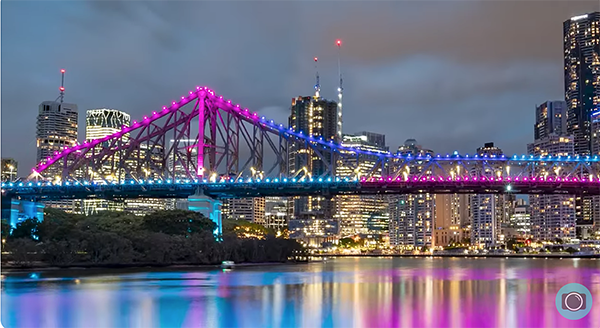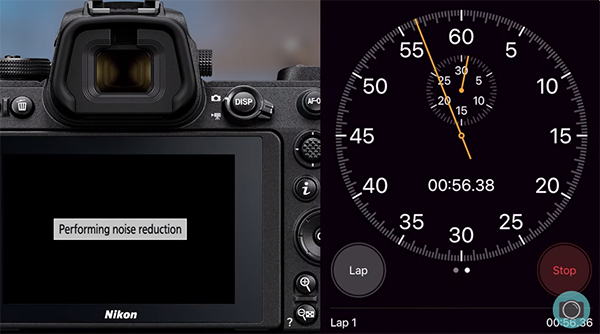This viral TikTok hack will restore your patchy grass in less than a week – and you only need 3 things to do it yourself
With over 4 million views, this hack is taking over at the perfect time
If you want a consistent flow of traffic to your interior designer site, then SEO (Search Engine Optimization) is the best marketing strategy.
At the end of the day, who is a more qualified prospect than someone browsing for “interior designers?”
However, SEO can be very confusing, especially if you are new to digital marketing. After reading a few blog posts about SEO, you encounter complex terms like technical SEO, on-page SEO, link-building, etc.
Don’t worry because you have just found the most practical and easy-to-follow guide about SEO tips for interior designers. In this guide, we will share the five key SEO tips for interior designers so you can know how to rank an interior designer site on top of the SERP (Search Engine Results Page).
So, without any further delay, let’s get started!
SEO stands for search engine optimization, which is the process of improving the visibility and relevance of a website or web page on search engines like Google or Bing.
For example, when someone searches for “interior design services in New York,” your website appears on the first page.
An effective SEO for interior designers can help you grow the business in the following ways:
Now, you better understand why SEO is a crucial marketing strategy to grow your Interior designing business. Let’s discuss the five most effective tips that you can follow to rank your website on Google SERPs.
Regardless of your business niche, ranking on Google without an effective content/keyword strategy is impossible. The best way to do this is to conduct keyword research and choose the most relevant and engaging keywords for your website.
Keywords are the words and phrases that your potential clients use to search for interior design services online. They reflect their needs, problems, preferences, and intentions. By targeting the right keywords, you can match your website with their search queries and drive more traffic to your site.
You can use tools like SEMrush, Ahref, or Google Keyword Planner to find the best keywords for your website. These tools can help you:
Once you have a list of keywords, you need to create useful, original, and unique content around them.
As you create content, remember to include your target keywords in strategic places within the content, such as the title tag, meta description, headings, body text, URL, image alt text, etc. Use internal links to connect different pages on your website. Use external links to cite authoritative sources.
The WordPress speed optimization and responsiveness of your website substantially impact your search engine rankings.
According to BrowserStack, 47% of consumers expect a website to load in less than 2 seconds, while 40% abandon a website that takes more than 3 seconds.
This results in a loss of business and can adversely affect your search engine rankings.
To optimize your website for speed and mobile-friendliness, consider the following measures:
Implementing these strategies will improve the search engine ranking of your Interior design website and enhance the user experience.
When someone searches on Google for a local business using a specific keyword, such as “interior design services in New York,” the primary result displayed on Google Maps is usually the business listed on that page, as shown below:
To improve your interior design business’ visibility in these listings, it is essential to establish a presence on Google My Business.
Make sure that your Google My Business profile is comprehensive, containing all crucial details pertaining to your business, which should encompass:
For businesses operating from multiple locations, it is advisable to create a separate Google My Business profile for each of these locations.
Online directories are websites that list and categorize different businesses based on their location, industry, service, etc. Some examples of online directories are Yelp, Houzz, Yahoo Maps, Local.com, Angie’s List, Elocal.com, etc.
Getting listed in online directories can help you:
In SEO, backlinks and hyperlinks are extremely important. In essence, a backlink represents a connection from an external website to your own. At the same time, a hyperlink transforms keywords and phrases into clickable links that direct users to relevant web destinations. Search engines consider anchor text keywords when determining their rankings.
The number of high-quality backlinks originating from other web pages to your own directly impacts your online visibility within the design industry. However, it is imperative that the websites linking back to your content must have a solid reputation.
While the option to purchase backlinks may exist, adopting more prudent approaches such as guest posting on reputable websites or providing reviews on blogs authored by respected designers and bloggers is advisable.
SEO is not a one-time thing but an ongoing process that requires constant monitoring, testing, and improvement. By following these five key SEO tips for interior designers, you can optimize your WordPress website and achieve higher rankings, traffic, leads, and sales.
If you need help with SEO or PR for your interior design website, we are here for you. Decor Blueprint is a trusted source of information and inspiration for thousands of interior design enthusiasts, homeowners, and professionals. By getting featured on Decor Blueprint, you can:
Don’t miss this opportunity to grow your online presence and reputation as an interior designer.
Long Exposure Noise Reduction is very helpful feature available in most modern digital cameras, including interchangeable lens models and many full-featured compacts. But as you’ll see in the following tutorial from the Photo Genius YouTube channel, leaving this setting turned on by default will hold you back in certain situations.
This feature is regularly used by landscape photographers and others when shooting in low light (and other situations that call for extremely slow shutter speeds) to minimize artifacts that often occur. It typically delivers cleaner results, albeit with a small loss in image detail. However, as you’ll see, there’s a penalty that’s often ignored and it’s one you should understand.
Instructor Paul Farris is an Australian pro who regularly posts simple lessons to help others get the most out of whatever cameras they use. In this five-minute episode he explains how Long Exposure Noise Reduction works, when you should use it, and the situations under which you may want to turn it off.

The image above may look really good, until you zoom in and notice a bunch of small, ugly imperfections. Whether these distractions are hot pixels or noise, they clearly detract from the quality of the image. This shot of an iconic bridge in Brisbane is a great example of when noise reduction can come to the rescue because the photo was captured with a 30-second exposure.
Cameras that feature Long Exposure Reduction often provide a choice of four different options: Low, Medium, High and Off. Farris explains that this function works by the camera capturing two shots of the scene—the first being the actual image, and another known as a “dark frame” that’s used to eliminate imperfections.
Farris explains where to find this setting on cameras of different brands, and this feature does an impressive job to improve his Brisbane Bridge photo. But here’s the rub: His 30-second exposure is followed by an additional 30-seconds to process the noise. Hence you’re unable to shoot another photo for a total one minute.

Farris notes that a 60-second wait may not be a huge problem when photographing static subjects, but other times it’s simply out of the question because the time it takes the camera to perform noise reduction is equal to the shutter speed. So even with a 10-second exposure your camera is on hold for a total of 20 seconds.
One example in which long wait times are counterproductive is when photographing fireworks displays, when you want to capture as many images as possible. Farris explains that in these and similar situations “with Long Exposure Noise Reduction turned on your shooting time is effectively halved.”
Bottom line: This feature can be a great tool to improve the quality of long-exposure images and save effort in post processing. But it’s important to be mindful of the aforementioned concern, as well as the additional drain on your camera’s battery. After watching this video head over to the Photo Genius YouTube channel for more helpful advice.
We also recommend watching the tutorial we recently posted from another pro, explaining how to create eye-catching landscape photos by adding a pro-quality vignette in Lightroom.
